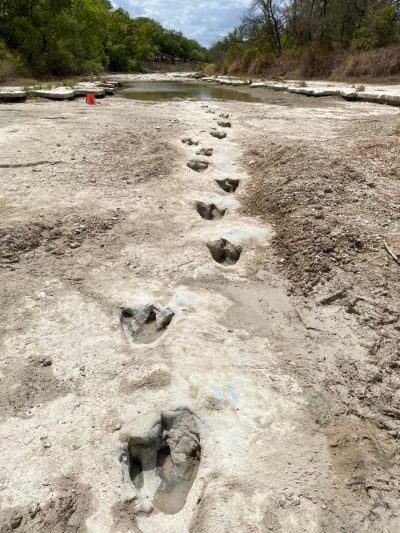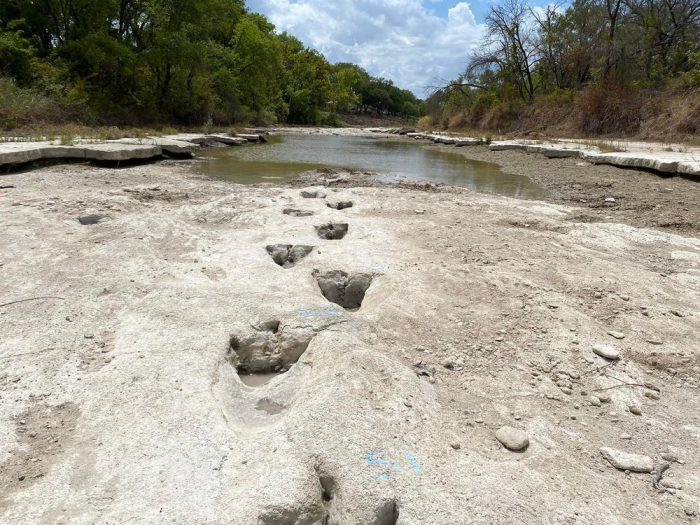When it comes to fossils, dinosaur bones are probably the ones that we think of the most. And with good reason!
When put together, they give us a great idea of the size and shape of a prehistoric animal. But you know what fossils are underrated?
These footprints may still leave a lot to the imagination, but there's something thrilling about seeing a set of tracks that were made 100 million years ago. Especially when they are so sharp and clear, they look like they could've been made only hours ago!
That is the case with a truly exceptional collection of footprints recently discovered in the well-named Dinosaur Valley State Park in Texas. Even in a place like that, these are some amazing tracks—dozens of prints left by a large theropod named Acrocanthosaurus!
The 113-million-year-old prints were found in a normally hidden location in the park—the bottom of a river bed! A recent drought in Texas has dried up many rivers and streams, including one running through the park. Thankfully, experts were able to spot and photograph these tracks before the rains returned and hid them all over again.
Who was Acrocanthosaurus?

A mounted skeleton of Acrocanthosaurus in the North Carolina Museum of Natural Sciences. (Wikimedia Commons)
This predator lived during the early Cretaceous, around 110-113 million years ago. Though less well known than T. rex or Giganotosaurus (which it was a cousin of), Acrocanthosaurus is actually one of the largest theropods ever found. (Theropods were bipedal dinosaurs and the closest relatives to modern birds.)
Its name means 'high-spined lizard', due to the relatively tall bones along its spine. This meant that it likely had a raised, muscular ridge along its back. An adult was about 4 m (15 feet) tall and 11 m (36 feet) long and a top predator of its day. Its bones have been discovered throughout parts of the U.S., including Texas, Oklahoma, and Wyoming.
And now it looks like we've got some prime tracks to add to that collection!
Terrific tracks

What a long trail! (Dinosaur Valley State Park/AFB/Handout)
Dinosaur tracks can tell paleontologists a surprising amount about the animal that left them behind. How they stood, how they moved, even how fast they could run! Being able to pair tracks with bones can really help complete the picture of how a dinosaur lived.
In this case, this Acrocanthosaurus had been wandering along what was once the shoreline of an enormous ocean. Though these tracks will soon be covered again by water, they are thankfully located inside a protected national park. This means that what is one of the longest dinosaur trackways ever discovered will around for future generations to see.
Let an expert take you on a step-by-step tour of the tracks in the video below!
OWLconnected will be taking a short break over the Labour Day long weekend, but we'll be back on Tuesday, September 6 to kick off what will be the first week of school for many of you. Enjoy the weekend!
 This incredible series of dino tracks looks so fresh! (Dinosaur Valley State Park/AFB/Handout)
This incredible series of dino tracks looks so fresh! (Dinosaur Valley State Park/AFB/Handout)









